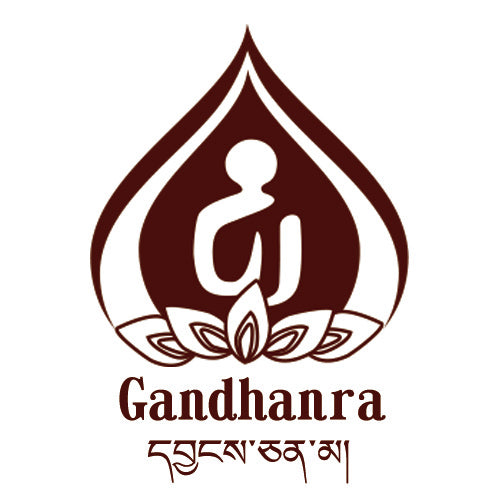1
/
of
0
Mahakala Badge ནག་པོ་ཆེན་པོ།
Mahakala Badge ནག་པོ་ཆེན་པོ།
⏱Vintage:
☞Handmade:
⚒Materials:
☲Size:
Regular price
$69.99 USD
Regular price
Sale price
$69.99 USD
Unit price
/
per
Couldn't load pickup availability
❤This is collect from Tibet, a old badge or pandent, made of thokcha (Cold Iron or meteoric iron), the shape is Mahakala.
Mahakala appears as a protector deity known as a dharmapala in Vajrayana Buddhism, particularly most Tibetan traditions as Citipati, and in Shingon Buddhism.
❤You can make it into a necklace, or a keychain, or just put it on your desk,as an ornament.
❤Details
100% Handmade
Pendant material:thokcha
Pattern: smahakala
Length: 46mm /1.9 inches
Width: : 34mm /1.35 inches
❤ABOUT Thokcha
Thunder Iron Thokcha (Tibetan: ཐོག་ལྕགས, གནམ་ལྕགས) are tektites and meteorites which serve as amulets.Typically high in iron content, also called Thunder Iron,Cold Iron.
Thogchags or Thokcha are worn as amulets by Tibetans, specifically people of the Himalayan regions.
Created in several forms, they often depict tantric deities, sacred animals, auspicious symbols, and mantras. Many represent ritual supports such as a mirror, phurba, or vajra. Some pieces may be abstract in nature, and the meaning of the form has since been lost in antiquity.
Other Thokcha were simply used as ancient arrow points, buckles, body armour, or even old horse trappings.
❤ABOUT MAHAKALA
Mahakala is a deity common to Hinduism and Buddhism.
In Hinduism, Mahakala is a manifestation of Shiva and is the consort of the goddess Mahakali; he most prominently appears in the Kalikula sect of Shaktism.
Mahakala also appears as a protector deity known as a dharmapala in Vajrayana Buddhism, particularly most Tibetan traditions as Citipati, and in Shingon Buddhism.
Six-Armed Mahakala,There are also terma lineages of various forms of Six-Armed Mahakala.it is in a dancing posture rather than upright, and is a very advanced Mahakala practice.
Mahakala is typically black in colour. Just as all colours are absorbed and dissolved into black, all names and forms are said to melt into those of Mahakala, symbolising his all-embracing, comprehensive nature.
Black can also represent the total absence of colour, and again in this case it signifies the nature of Mahakala as ultimate or absolute reality.
This principle is known in Sanskrit as "nirguna", beyond all quality and form, and it is typified by both interpretations.
Mahayana Buddhism, and all schools of Tibetan Buddhism, rely on Mahakala as guardian deity.
He is depicted in a number of variations, each with distinctly different qualities and aspects. He is also regarded as the emanation of different beings in different cases, namely Avalokiteśvara (Wylie: spyan ras gzigs) or Cakrasaṃvara (Wylie: ’khor lo bde mchog). Mahakala is almost always depicted with a crown of five skulls, which represent the transmutation of the five kleśās (negative afflictions) into the five wisdoms.
View full details
Mahakala appears as a protector deity known as a dharmapala in Vajrayana Buddhism, particularly most Tibetan traditions as Citipati, and in Shingon Buddhism.
❤You can make it into a necklace, or a keychain, or just put it on your desk,as an ornament.
❤Details
100% Handmade
Pendant material:thokcha
Pattern: smahakala
Length: 46mm /1.9 inches
Width: : 34mm /1.35 inches
❤ABOUT Thokcha
Thunder Iron Thokcha (Tibetan: ཐོག་ལྕགས, གནམ་ལྕགས) are tektites and meteorites which serve as amulets.Typically high in iron content, also called Thunder Iron,Cold Iron.
Thogchags or Thokcha are worn as amulets by Tibetans, specifically people of the Himalayan regions.
Created in several forms, they often depict tantric deities, sacred animals, auspicious symbols, and mantras. Many represent ritual supports such as a mirror, phurba, or vajra. Some pieces may be abstract in nature, and the meaning of the form has since been lost in antiquity.
Other Thokcha were simply used as ancient arrow points, buckles, body armour, or even old horse trappings.
❤ABOUT MAHAKALA
Mahakala is a deity common to Hinduism and Buddhism.
In Hinduism, Mahakala is a manifestation of Shiva and is the consort of the goddess Mahakali; he most prominently appears in the Kalikula sect of Shaktism.
Mahakala also appears as a protector deity known as a dharmapala in Vajrayana Buddhism, particularly most Tibetan traditions as Citipati, and in Shingon Buddhism.
Six-Armed Mahakala,There are also terma lineages of various forms of Six-Armed Mahakala.it is in a dancing posture rather than upright, and is a very advanced Mahakala practice.
Mahakala is typically black in colour. Just as all colours are absorbed and dissolved into black, all names and forms are said to melt into those of Mahakala, symbolising his all-embracing, comprehensive nature.
Black can also represent the total absence of colour, and again in this case it signifies the nature of Mahakala as ultimate or absolute reality.
This principle is known in Sanskrit as "nirguna", beyond all quality and form, and it is typified by both interpretations.
Mahayana Buddhism, and all schools of Tibetan Buddhism, rely on Mahakala as guardian deity.
He is depicted in a number of variations, each with distinctly different qualities and aspects. He is also regarded as the emanation of different beings in different cases, namely Avalokiteśvara (Wylie: spyan ras gzigs) or Cakrasaṃvara (Wylie: ’khor lo bde mchog). Mahakala is almost always depicted with a crown of five skulls, which represent the transmutation of the five kleśās (negative afflictions) into the five wisdoms.

